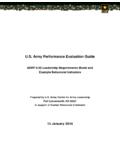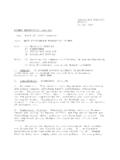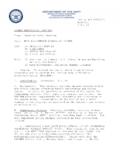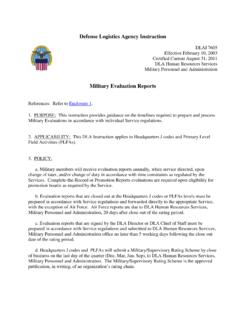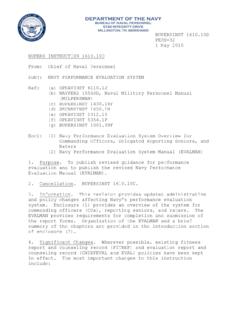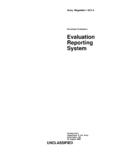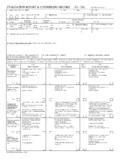Transcription of Evaluation of Courses of Fire for Law Enforcement …
1 Research Report 1982 Evaluation of Courses of fire for Law Enforcement Firearms training Peter S. Schaefer Army Research Institute Leonard Bruce Auburn University John Lipinski Army Research Institute December 2014 United States Army Research Institute for the Behavioral and Social Sciences Approved for public release; distribution is unlimited. Army Research Institute for the Behavioral and Social Sciences Department of the Army Deputy Chief of Staff, G1 Authorized and approved: MICHELLE SAMS, Director Technical Review by William R. Bickley, Army Research Institute Elizabeth Uhl, Army Research Institute NOTICES DISTRIBUTION: This Research Report has been submitted to the Defense Information Technical Center (DTIC).
2 Address correspondence concerning ARI reports to: Army Research Institute for the Behavioral and Social Sciences, Attn: DAPE-ARI-ZXM, 6000 6th Street (Building 1464 / Mail Stop: 5610), Fort Belvoir, VA 22060-5610. FINAL DISPOSITION: Destroy his Research Report when it is no longer needed. Do not return it to the Army Research Institute for the Behavioral and Social Sciences. NOTE: The findings in this Research Report are not to be construed as an official Department of the Army position, unless so designated by other authorized documents. REPORT DOCUMENTATION PAGE 1. REPORT DATE (dd-mm-yy) December 2014 2. REPORT TYPE Final 3. DATES COVERED (from.. to) December 2012 - April 2014 4. TITLE AND SUBTITLE Evaluation of Courses of fire for Law Enforcement Firearms training 5a.
3 CONTRACT OR GRANT NUMBER 5b. PROGRAM ELEMENT NUMBER 622785 6. AUTHOR(S) Peter S. Schaefer; Leonard L. Bruce; John J. Lipinski 5c. PROJECT NUMBER A790 5d. TASK NUMBER 359 5e. WORK UNIT NUMBER 7. PERFORMING ORGANIZATION NAME(S) AND ADDRESS(ES) Army Research Institute for the Behavioral & Social Sciences 6000 6th Street, (Building 1464 / Mail Stop: 5610) Fort Belvoir, VA 22060-5610 8. PERFORMING ORGANIZATION REPORT NUMBER Research Report 1982 9. SPONSORING/MONITORING AGENCY NAME(S) AND ADDRESS(ES) Army Research Institute for the Behavioral & Social Sciences 6000 6th Street, (Building 1464 / Mail Stop: 5610) Fort Belvoir, VA 22060-5610 10. MONITOR ACRONYM ARI 11. MONITOR REPORT NUMBER Research Report 1982 12.
4 DISTRIBUTION/AVAILABILITY STATEMENT: Distribution Statement A. Approved for public release; distribution is unlimited. 13. SUPPLEMENTARY NOTES Subject Matter POC: Dr. Peter S. Schaefer, Fort Benning 14. ABSTRACT (Maximum 200 words): In response to active shooter threats, the Army Military Police School (USAMPS) identified current best practices for weapons skills training as employed by various civilian and military law Enforcement authorities. That information was then used to construct a new set of pistol training exercises which focus on dynamic shooting engagements and the development of skills like smooth weapons handling, successful target transitioning, and rapid weapon reloading. To identify an effective, efficient approach for training these skills, Active and Reserve Military Police (MPs) were trained on a common set of pistol exercises in either a Dry, Engagement Skills Trainer 2000 (EST 2000), Live, or Live Plus ( , identical to the Live condition but with additional practice rounds).
5 Baseline ( , pre- training ) and post- training shooting performance was measured. Results indicated that the Dry and Live Plus conditions were consistently the most effective at improving MP performance. 15. SUBJECT TERMS Active Shooter, Military Police, Marksmanship, Simulation, Live fire , Dry fire , Law Enforcement , training SECURITY CLASSIFICATION OF 19. LIMITATION OF 20. NUMBER 21. RESPONSIBLE PERSON 16. REPORT Unclassified 17. ABSTRACT Unclassified 18. THIS PAGE Unclassified ABSTRACT Unlimited Unclassified OF PAGES 19 Dorothy Young 703-545-2316 i Research Report 1982 Evaluation of Courses of fire for Law Enforcement Firearms training Peter S.
6 Schaefer Army Research Institute Leonard Bruce Auburn University John Lipinski Army Research Institute Fort Benning Research Unit Scott E. Graham, Chief United States Army Research Institute for the Behavioral and Social Sciences December 2014 Approved for public release; distribution is unlimited. ii ACKNOWLEDGEMENT The authors would like to express their gratitude to the leadership and staff of the Army Military Police School at Fort Leonard Wood, MO, for their support. iii Evaluation OF Courses OF fire FOR LAW Enforcement FIREARMS training EXECUTIVE SUMMARY Research Requirement: In response to active shooter threats, the Army Military Police School (USAMPS) identified current best practices for weapons skills training as employed by various civilian and military law Enforcement authorities.
7 That information was then used to construct a new set of military police (MP) pistol exercises which focus on dynamic shooting engagement and the development of skills in successful target transitioning and rapid weapon reloading the types of skills required for success in active shooter situations. To identify an effective, efficient approach for training these skills, the Army Research Institute was asked by USAMPS to aid in the experimental design and analysis of data resulting from the Law Enforcement Firearms training Validation Research effort. Procedure: Active (N = 134) and Reserve (N=230) MPs were trained on a new set of pistol exercises in a Dry, Engagement Skills Trainer 2000 (EST 2000), Live, or Live Plus (a live fire conditions with more live practice rounds) condition.
8 Baseline and post- training shooting performance was measured via scores on a newly developed course of fire . Findings: For Active MPs, only the Dry and Live Plus conditions significantly improved qualification scores. For Reserve MPs, all four training conditions were equally effective at improving qualification scores. Therefore, the results indicated that the Dry and Live Plus conditions were the most consistently effective at improving MP qualification scores. Utilization and Dissemination of Findings: The findings provide decision makers with relevant information regarding resource allocation and training strategy implementation. For example, to the extent that the MP samples are representative of their respective populations, then different training recommendations are appropriate for Reserve versus Active MPs.
9 These findings were disseminated and briefed to USAMPS personnel at Fort Leonard Wood, MO. iv Evaluation OF Courses OF fire FOR LAW Enforcement FIREARMS training CONTENTS Page INTRODUCTION ..1 METHOD ..3 RESULTS ..3 DISCUSSION AND RECOMMENDATIONS ..7 REFERENCES ..9 APPENDICES APPENDIX A QUALIFICATION COURSE OF fire FOR PISTOL .. A-1 APPENDIX B. ARMY LAW Enforcement FIREARMS DAY 2 PILOT PISTOL PRELIMINARY MARKSMANSHIP INSTRUCTION ..B-1 v Evaluation OF Courses OF fire FOR LAW Enforcement FIREARMS training Introduction Responding to an active shooter threat is a critical responsibility of the military police.
10 A recent Evaluation of current military police training in response to the Fort Hood shooting incident, however, indicated that the current training at the Army Military Police School (USAMPS) does not adequately incorporate successful models of active shooter response from civilian and military law Enforcement authorities (Finding ; Fort Hood Internal Review Team, 2010). In response to this finding, the USAMPS completed an analysis of civilian law Enforcement firearms training programs to identify current best practices for weapon skills training . The results indicated the need to shift away from a qualification-centered training regime to one emphasizing skill development for more dynamic shooting engagements. These tasks include smooth weapons handling, successful target transitioning, and rapid weapon reloading in the appropriate visual workspace.










